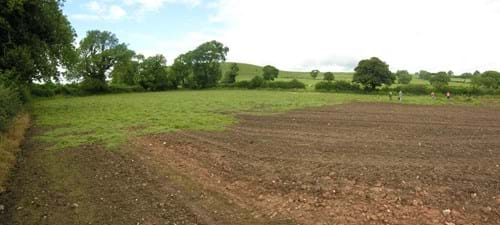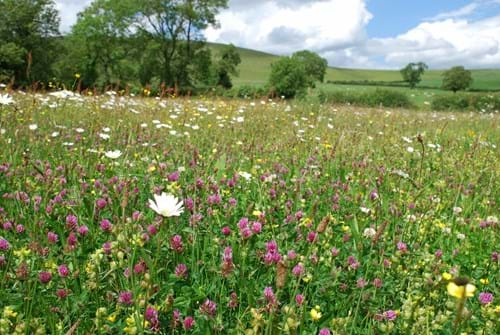Bringing residents up to speed on Stafford Brooks project

Stafford residents can get the lowdown on all the latest developments on a £4.1million biodiversity project at a public information event.
A team from the Stafford Brooks project will be on hand at the event to answer questions about the scheme which will create havens for wildlife to flourish in meadows and alongside rivers and streams, helping to reduce risk of flooding.
National Highways is funding the scheme working in partnership with Staffordshire Wildlife Trust, Stafford Borough Council and the Environment Agency.
With conservation work due to start on eight key sites, a drop-in event has been planned for local residents which will take place at Stafford Library in Tipping Street on Wednesday 29 May from 12.30pm to 5pm.
Three main types of habitat improvement works are being carried out by Staffordshire Wildlife Trust:
- Grassland improvement works – basic grassland will ultimately be turned into lowland meadow which has a much bigger variety of plants that will attract pollinating insects, like bees, butterflies and moths.

Caption: This is an example of grassland improvement works similar to those planned for Stafford Brooks sites. Above is land at Shawcroft which was ploughed before wildflower seed was laid. Below, how the site eventually looked. Pictures courtesy of David Cadman.

- Wetland enhancement works - conservation work will be carried out which can help ease the severity of flood risk to properties by capitalising on the natural function of a floodplain to provide space for water. By using natural solutions which will complement traditional hard engineering, water can be encouraged to pool where it’s most convenient for wildlife and people. The work should also improve the quality of naturally wet habitats for wildlife.
- River re-profiling - this work will involve using big machinery to move earth and create a different shape to a particular stretch of the river. This work will encourage the flow of water in a river or stream to “wiggle” throughout the landscape, slowly, as opposed to speeding through the landscape in a straight channel. This can help to lower the peak water flow at pinch points.
The eight sites where work is taking place are Kingsmead, Kingston Pool Covert (South), Rising Brook, Radford Meadows, Queensville, Fairway, Littleworth Tennis Courts and Corporation Street Bowling Green.
National Highways Regional Sponsor, Paul Unwin, said:
“As we move into this key stage of the project we wanted to make sure residents were fully informed about the conservation works taking place in their community and the fantastic benefits they will bring.
“The project will help create, restore and connect places for wildflowers, trees and wildlife, where the environment has been impacted by previous activities such as road building. Natural solutions such as new wetlands and species-rich grasslands will help filter polluted run-off from roads and provide some level of flood alleviation.
“Through our Environment and Wellbeing Designated Fund we are able to make a difference to the environment and the people living near our roads.”
National Highways is this week marking its second Nature Week, highlighting the nature-focused work it and its partners do around the country. National Highways is on course to achieve its 2020 commitment of halting the decline of biodiversity and achieving no net loss in biodiversity across its activities by 2025.
David Cadman, Head of Nature Recovery Networks for Staffordshire Wildlife Trust, said:
“After an initial phase of planning, we are excited to get conservation works started. The work we do through this project will not only help wildlife in specific places across Stafford, it will also act as a network, allowing key stepping stones for wildlife to move more freely, and safely, across our county town.”
Information about each area in the Stafford Brooks project is available on Staffordshire Wildlife Trust’s website here:
https://www.staffs-wildlife.org.uk/stafford-brooks
Meanwhile, Stafford is now officially a bee friendly town. The national “Bee Friendly Trust” has granted the accolade to the town to recognise its actions and activities to increase pollinators.
Local volunteers have been working with Stafford Borough Council to create a better environment for all pollinating insects such as bumblebees, honeybees, solitary bees, hoverflies, wasps, and butterflies.
Notes to Editors
Funding for the project has been provided through National Highways’ Designated Funds Environment and Wellbeing fund. This fund is helping us operate our business in an environmentally responsible way, while making sure sustainability shapes our work from start to finish.
Our Designated Funds initiatives are separate to our core work of operating, maintaining and improving England’s strategic road network. They provide ring-fenced funding that we use to invest in and support initiatives that deliver lasting benefits for road users, the environment and communities across England.
From 2020 to 2025 – our second road period - we’ll be investing £936 million in Designated Funds. Our four funding streams for this period are:
- Safety and congestion
- Environment and wellbeing
- Users and communities
- Innovation and modernisation
For more on National Highways’ biodiversity work, visit https://nationalhighways.co.uk/our-work/environment/biodiversity/
For more on National Highways Designated Funds, visit https://nationalhighways.co.uk/our-work/designated-funds/
